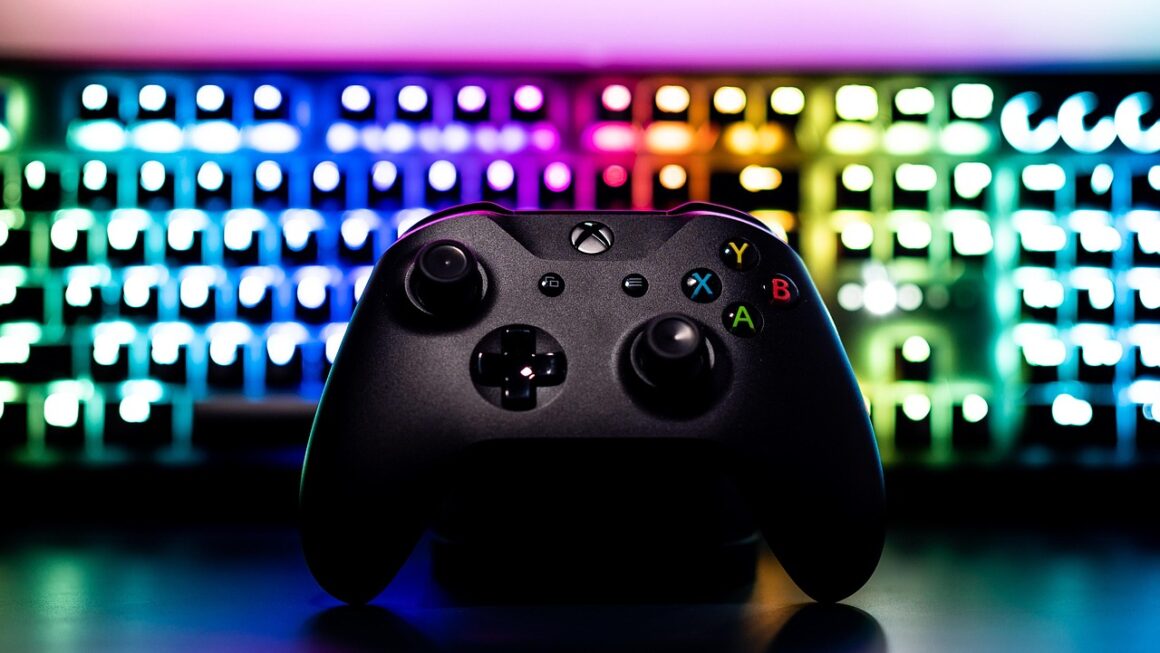Mobile gaming has exploded from a niche pastime into a global phenomenon, captivating billions with its accessibility, variety, and ever-evolving technology. From casual puzzles played on the morning commute to immersive RPGs enjoyed at home, the world of mobile games offers something for everyone. This blog post will delve into the multifaceted landscape of mobile gaming, exploring its history, key trends, popular genres, and the factors that contribute to its continued success.
The Rise of Mobile Gaming
A Brief History
The history of mobile gaming is intertwined with the evolution of mobile phones. Early beginnings were marked by simple games like Snake on Nokia phones. These rudimentary titles paved the way for more sophisticated gaming experiences as mobile technology advanced.
- Early Days (1990s-2000s): Simple games like Snake and Tetris were pre-installed on basic mobile phones.
- Java Games (Early 2000s): Java ME platform enabled more complex games to be downloaded and played.
- The Smartphone Revolution (Late 2000s): The introduction of the iPhone and Android devices brought touchscreens, powerful processors, and app stores, revolutionizing mobile gaming.
- Modern Mobile Gaming (2010s-Present): Advanced graphics, online multiplayer, and free-to-play models dominate the market.
Key Factors Driving Growth
Several key factors contribute to the sustained growth of the mobile gaming market:
- Accessibility: Smartphones are ubiquitous, making games easily accessible to a vast audience.
- Affordability: Many mobile games are free to download, with optional in-app purchases.
- Convenience: Mobile gaming offers a convenient way to pass the time during commutes, breaks, or travel.
- Variety: A wide range of game genres cater to different tastes and preferences.
- Technological Advancements: Powerful mobile processors, improved graphics, and faster internet speeds enhance the gaming experience.
- Social Connectivity: Many mobile games feature online multiplayer modes and social features, fostering a sense of community.
- 5G Rollout: Lower latencies and higher bandwidth mean a better gaming experience on-the-go.
Popular Mobile Game Genres
Casual Games
Casual games are designed to be easy to pick up and play, offering simple mechanics and short play sessions. These are often popular amongst new gamers.
- Examples: Candy Crush Saga, Angry Birds, Temple Run, Subway Surfers.
- Characteristics: Simple gameplay, easy-to-learn controls, bright and colorful graphics, addictive loops.
- Target Audience: A broad demographic, including casual players and those seeking quick entertainment.
Puzzle Games
Puzzle games challenge players’ problem-solving skills through various brain-teasing challenges.
- Examples: Sudoku, Two Dots, Monument Valley, The Room.
- Characteristics: Strategic thinking, logic puzzles, spatial reasoning, problem-solving.
- Target Audience: Players who enjoy mental challenges and strategic gameplay.
Strategy Games
Strategy games require players to plan and execute long-term strategies to achieve victory.
- Examples: Clash of Clans, Rise of Kingdoms, Plague Inc., Plants vs. Zombies.
- Characteristics: Resource management, base building, tactical combat, strategic planning.
- Target Audience: Players who enjoy deep gameplay and strategic decision-making.
Role-Playing Games (RPGs)
RPGs offer immersive storylines, character customization, and exploration of vast virtual worlds.
- Examples: Genshin Impact, Honkai: Star Rail, Mobile Legends: Bang Bang, Diablo Immortal.
- Characteristics: Character progression, skill development, exploration, quest completion, online multiplayer.
- Target Audience: Players who enjoy immersive storylines, character customization, and cooperative gameplay.
Action Games
Action games focus on fast-paced gameplay, reflexes, and combat skills.
- Examples: Call of Duty: Mobile, PUBG Mobile, Fortnite, Critical Ops.
- Characteristics: Fast-paced action, shooting mechanics, competitive gameplay, online multiplayer.
- Target Audience: Players who enjoy competitive gameplay and adrenaline-pumping action.
The Business of Mobile Gaming
Monetization Models
Mobile game developers employ various monetization models to generate revenue:
- Free-to-Play (F2P): The game is free to download, with optional in-app purchases for items, upgrades, or currency. This is by far the most common model.
- Premium: The game is purchased upfront for a fixed price.
- Subscription: Players pay a recurring fee for access to the game and its features.
- Advertising: Games display ads, generating revenue based on impressions or clicks.
In-App Purchases (IAP)
In-app purchases are a major revenue stream for mobile games, allowing players to buy virtual items, upgrades, or cosmetic enhancements.
- Examples: Gems, coins, skins, boosters, battle passes.
- Ethical Considerations: The prevalence of “loot boxes” and pay-to-win mechanics raises concerns about addictive gambling behavior.
- Regulation: Some countries are introducing regulations to protect players from predatory monetization practices.
The eSports Scene
Mobile eSports is a rapidly growing segment of the gaming industry, with professional players competing in tournaments for large cash prizes.
- Popular Titles: Mobile Legends: Bang Bang, PUBG Mobile, Call of Duty: Mobile.
- Tournament Structure: Professional leagues, regional tournaments, and world championships.
- Sponsorships: Brands are investing in mobile eSports to reach a younger, engaged audience.
Trends and Future of Mobile Gaming
Cloud Gaming
Cloud gaming allows players to stream games to their mobile devices without the need for high-end hardware.
- Services: Xbox Cloud Gaming, NVIDIA GeForce Now, Google Stadia (shut down).
- Benefits: Access to high-quality games on low-end devices, no downloads or installations.
- Challenges: Requires a stable and fast internet connection.
Augmented Reality (AR) and Virtual Reality (VR)
AR and VR technologies are enhancing mobile gaming experiences by overlaying digital content onto the real world or immersing players in virtual environments.
- Examples: Pokémon GO (AR), VR headsets for mobile gaming.
- Potential: Immersive and interactive gaming experiences, location-based gameplay.
- Limitations: Hardware requirements, battery consumption.
5G Technology
5G networks are enabling faster download speeds, lower latency, and improved connectivity for mobile gaming.
- Benefits: Improved multiplayer performance, smoother streaming of cloud games, enhanced AR/VR experiences.
- Impact: Faster adoption of cloud gaming and AR/VR technologies, improved overall gaming experience.
Cross-Platform Play
Cross-platform play allows players on different devices (e.g., mobile, PC, consoles) to play together.
- Examples: Fortnite, Call of Duty: Mobile, Genshin Impact.
- Benefits: Expanded player base, increased social interaction, seamless gaming experience across devices.
Conclusion
Mobile gaming’s journey from simple pre-installed games to a global eSports phenomenon underscores its adaptability and appeal. With continuous technological advancements, innovative monetization strategies, and a diverse range of genres, mobile gaming is poised for continued growth and innovation. Whether you’re a casual puzzle enthusiast or a competitive eSports player, the world of mobile gaming offers endless opportunities for entertainment and engagement. Keep an eye on emerging trends like cloud gaming, AR/VR integration, and the widespread adoption of 5G, as they will undoubtedly shape the future of this dynamic industry.




